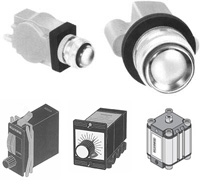Using Pneumatic Valves in Context
Pneumatic valves are essential components of all pneumatic control systems. Without these highly specific valves, pneumatic systems could not actually or effectively control the rate/amount of air and pressure levels. A pneumatic system depends on the force of compressed air as a means of transmitting power. These systems are found in a wide range of industrial applications (diesel engines to power tools).
When discussing pneumatic valves, it is important to recognize they have two distinct contexts. Firstly, a pneumatic device modulates and controls airflow (or other inert gases) within the pneumatic control system. In other words, the air is controlled, but it may not be the driving force that controls the valve's mechanism. Secondly, the air is used to control the valve's mechanisms, but media flowing through the ports of the valve is a fluid like oil, water, or similar liquids. Understanding the distinction between these two contexts helps individuals understand and choose the right pneumatic valves for specific applications.
There are several classifiers used to designate pneumatic valve types. Knowing the differences between valve types is essential for effective operations. Valves are classified using these four approaches:
- Position of un-actuated valve
- Amount of exit and entry ports
- The mechanism used to open and close ports
- Number of switching positions and flow paths
Pneumatic Controls
Choosing the right valve is mandatory for successful pneumatic functions. For more information about choosing the right valve for you, please give us a call.
Related Reading
- Common Pneumatic Valve Types
Pneumatic control systems work with a series of components, which includes pneumatic valves. Pneumatic components are responsible for controlling rate, pressure, and the amount of compressed air that moves through the system.
- How do Pneumatic Valves Work
- Maximize the Performance of Pneumatic Control Systems


- Ellis/Kuhnke Controls
132 Lewis Street Unit A-2, Eatontown, N.J. 07724
Phone: 1-800-221-0714
Fax: 732-291-8154
Email: Info@ekci.com
- Home Pneumatic Controls Technical Info CAD Drawings Contact Us Pneumatic Timers Blog Site Map
